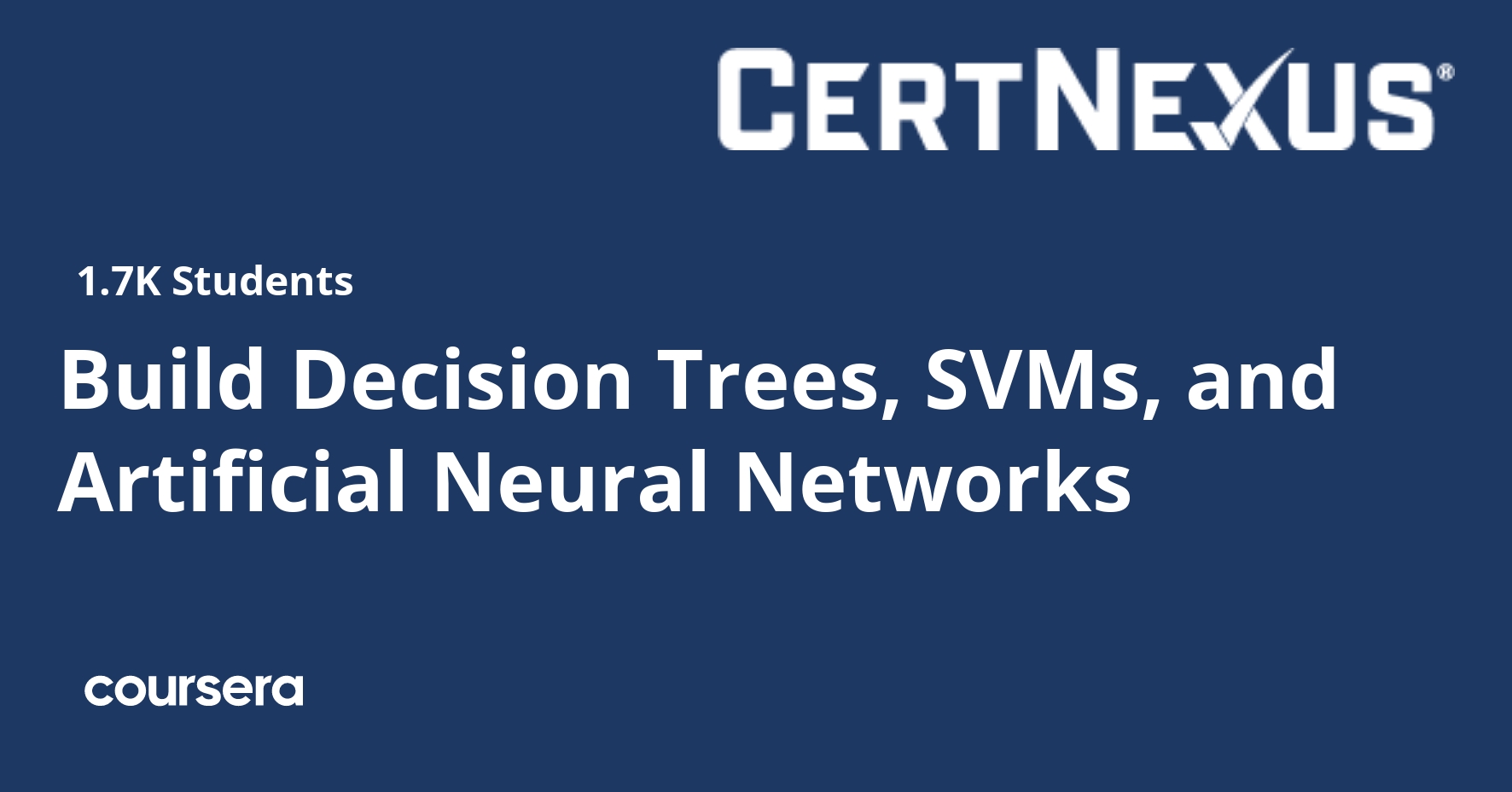Description
There are numerous types of machine learning algorithms, each of which has certain characteristics that might make it more or less suitable for solving a particular problem. Decision trees and support-vector machines (SVMs) are two examples of algorithms that can both solve regression and classification problems, but which have different applications. Likewise, a more advanced approach to machine learning, called deep learning, uses artificial neural networks (ANNs) to solve these types of problems and more. Adding all of these algorithms to your skillset is crucial for selecting the best tool for the job.
This fourth and final course within the Certified Artificial Intelligence Practitioner (CAIP) professional certificate continues on from the previous course by introducing more, and in some cases, more advanced algorithms used in both machine learning and deep learning. As before, you’ll build multiple models that can solve business problems, and you’ll do so within a workflow.
Ultimately, this course concludes the technical exploration of the various machine learning algorithms and how they can be used to build problem-solving models.
What you will learn
Build Decision Trees and Random Forests
You’ve built machine learning models from fundamental linear regression and classification algorithms. These algorithms can get you pretty far in many scenarios, but they are not the only algorithms that can meet your needs. In this module, you’ll build machine learning models from decision trees and random forests, two alternative approaches to solving regression and classification problems.
Build Support-Vector Machines (SVM)
Another alternative approach to regression and classification comes in the form of support-vector machines (SVMs). In this module, you’ll build SVMs that can do a good job of handling outliers and tackling high-dimensional data in an efficient manner.
Build Multi-Layer Perceptrons (MLP)
All of the algorithms discussed thus far fall under the general umbrella of machine learning. While they are powerful and complex in their own right, the algorithms that make up the subdomain of deep learning—called artificial neural networks (ANNs)—are even more so. In this module, you’ll build a fundamental version of an ANN called a multi-layer perceptron (MLP) that can tackle the same basic types of tasks (regression, classification, etc.), while being better suited to solving more complicated and data-rich problems.
Build Convolutional and Recurrent Neural Networks (CNN/RNN)
Now that you’ve built MLP neural networks, you can incorporate them into two wider architectures: convolutional neural networks (CNNs), which excel at solving computer vision problems; and recurrent neural networks (RNNs), which are most often used to process natural languages.







